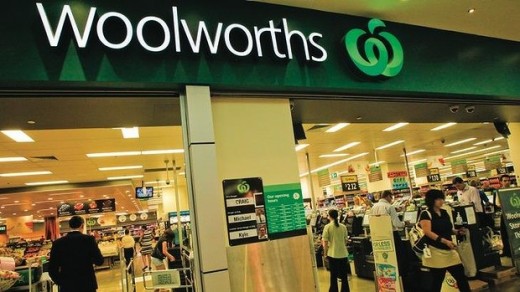Woolies losing the two-horse race
 Elizabeth Knight Business columnist November 05, 2014
Elizabeth Knight Business columnist November 05, 2014
Concern: It wasn’t so much that Coles had radically outperformed expectations, but more that Woolworths fell significantly short, says Elizabeth Knight. Photo: Glenn Hunt
To the extent that one can call a winner in the supermarket field, it was Coles – whose parent company Wesfarmers delivered a better than expected sales performance from most of its retail brands, and in particular, Coles supermarkets and hardware chain Bunnings.
Having been running neck and neck on sales for the previous six months, Coles took a decisive lead in the first quarter of 2014-15 – a result that has upset the bookmakers, or in this case, the analysts.
Woolworths’ core food and liquor like-for-like sales were below expectations and represented the slowest growth rate since the final quarter of 2012.
The performance has sent analysts back to their models to revise projected earnings for Woolworths for 2014-15. Questions are now being raised as to whether the management can meet its full-year guidance of an increase in net profit of between 4 per cent and 7 per cent. It’s a target on which Woolworths is staying firm.
It wasn’t so much that Coles had radically outperformed expectations, but more that Woolworths fell significantly short – not just its supermarkets business but also its liquor operations and its general merchandise brands, including Big W.
Its fledgling home improvement business, Masters, remains a drag on overall group performance – appearing even worse when pitched against its rival Bunnings..
The fact that Coles performed so much better suggests Woolworths’ result was not the product of a structural or broader economic problem in retailing.
And if it was because of more competition from Aldi or Costco, it should have affected Coles as well.
Indeed the Bureau of Statistics’ numbers for last month demonstrate quite clearly that retail sales were stronger than expected and that the gains from last year have been sustained.
That said, the huge boost in the electronic goods category – courtesy of the release of the iPhone 6 – appears to have distorted the overall picture a bit.
But even after accounting for that, it seems consumers are discounting the chances of harsher federal budget measures getting through the Senate and they are feeling the wealth effect from an increase in the value of their homes and a fall in the price of fuel.
Retailing is by no means booming – rather it is growing steadily.
This suggests there were issues particular to the management of Woolworths that were behind its weaker than expected sales result.
The first hint of softening was apparent in the fourth quarter of the previous financial year. Most retail analysts put it down to an aberration.
But following the even softer first quarter this year, it looks more like the start of a trend and the questions being asked are: what went wrong and how/when can Australia’s largest retailer recover its form?
There is some consensus that Woolworths has a marketing and communications problem.
At the heart of the issue appears to be the inability for both supermarket chains to use the highly effective fuel docket promotion to drive customers into their stores. The Australian Competition and Consumer Commission put a halt to that strategy earlier his year, which left the retailers with something of a promotional void and a marketing challenge.
But where Coles was able to improve its sales momentum, Woolworths appears to have struggled.
During the three-month period, Woolworths has attempted three different discreet promotions, starting with vouchers in July, followed by a relaunch of the Fresh Food People campaign in August (which didn’t help grocery sales), and it is now pushing the Cheap Cheap campaign.
While it is deeply discounting some products such as bread, consumers appear to be unconvinced – with a lingering view that Woolworths is not as cheap as the competition.
Whether that view is just a misguided perception depends on whom you talk to.
Woolworths head Grant O’Brien believes it is a perception problem, but some analysts think Woolworths has under-invested in price (that is, it has not discounted enough).
At the very least, the marketing budget it inherited when the fuel shopper docket program was scaled back appears to have been misallocated.
The Cheap Cheap campaign is meant to rectify this and provide Woolworths with a much needed “killer campaign”, but as O’Brien admits, changing perception is a long-dated exercise.
It appears Coles has cemented its lead on the belief that it delivers better value for customers. Indeed this has been its focus for the past five years, since its corporate renovation began under Wesfarmers.
“Coles understands that Australian families are facing higher costs of living and we have continued to invest in better value, including launching ‘Down Down Frozen’ across more than 100 product lines,” Coles supermarkets boss John Durkan says. “We have also provided increasingly targeted offers to customers through Flybuys.”
(146)














